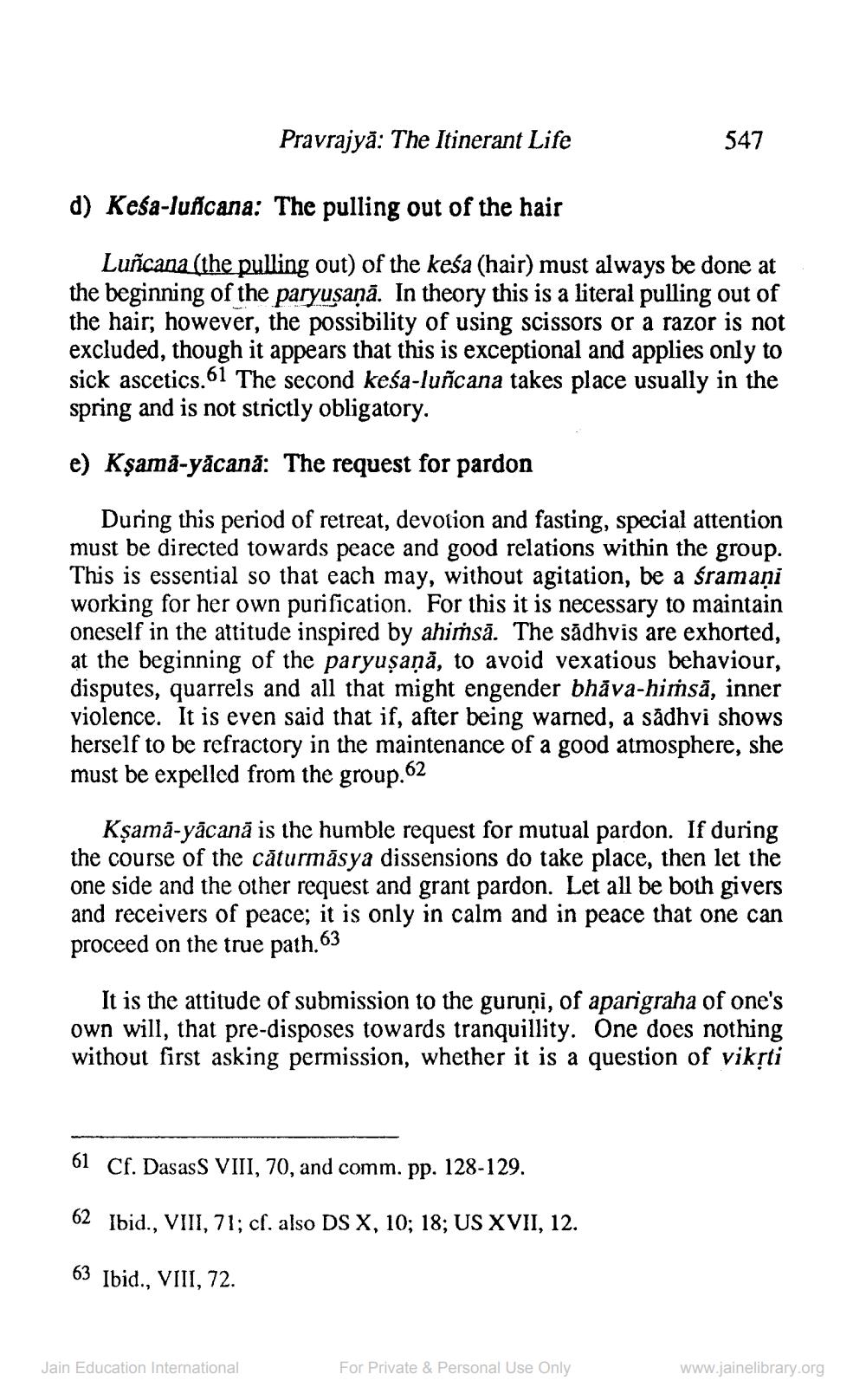________________
Pravrajya: The Itinerant Life
d) Keśa-luñicana: The pulling out of the hair
Luñcana (the pulling out) of the keśa (hair) must always be done at the beginning of the paryuṣaṇā. In theory this is a literal pulling out of the hair; however, the possibility of using scissors or a razor is not excluded, though it appears that this is exceptional and applies only to sick ascetics.61 The second kesa-luñcana takes place usually in the spring and is not strictly obligatory.
e) Kṣamā-yācana: The request for pardon
During this period of retreat, devotion and fasting, special attention must be directed towards peace and good relations within the group. This is essential so that each may, without agitation, be a śramani working for her own purification. For this it is necessary to maintain oneself in the attitude inspired by ahimsa. The sadhvis are exhorted, at the beginning of the paryuṣaṇā, to avoid vexatious behaviour, disputes, quarrels and all that might engender bhāva-hiṁsā, inner violence. It is even said that if, after being warned, a sådhvi shows herself to be refractory in the maintenance of a good atmosphere, she must be expelled from the group.
62
Kṣamā-yācanā is the humble request for mutual pardon. If during the course of the caturmasya dissensions do take place, then let the one side and the other request and grant pardon. Let all be both givers and receivers of peace; it is only in calm and in peace that one can proceed on the true path.63
It is the attitude of submission to the guruni, of aparigraha of one's own will, that pre-disposes towards tranquillity. One does nothing without first asking permission, whether it is a question of vikṛti
61 Cf. DasasS VIII, 70, and comm. pp. 128-129.
62 Ibid., VIII, 71; cf. also DS X, 10; 18; US XVII, 12.
63 Ibid., VIII, 72.
547
Jain Education International
For Private & Personal Use Only
www.jainelibrary.org




